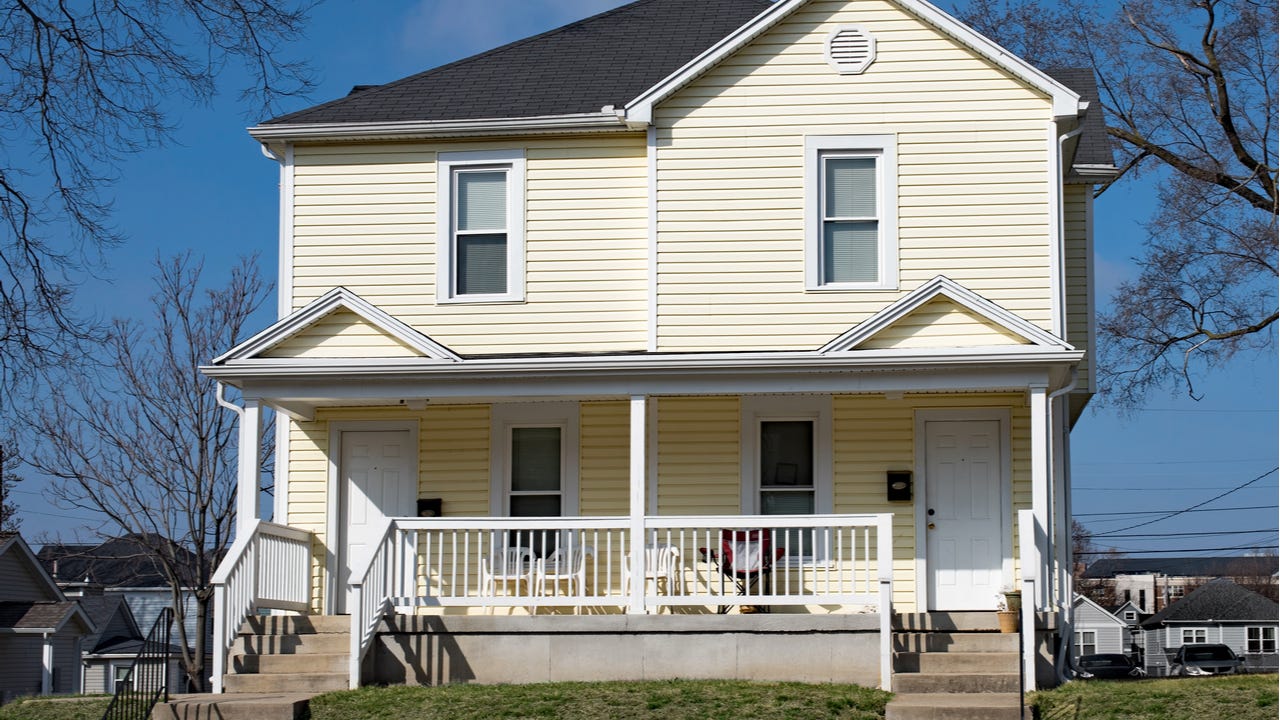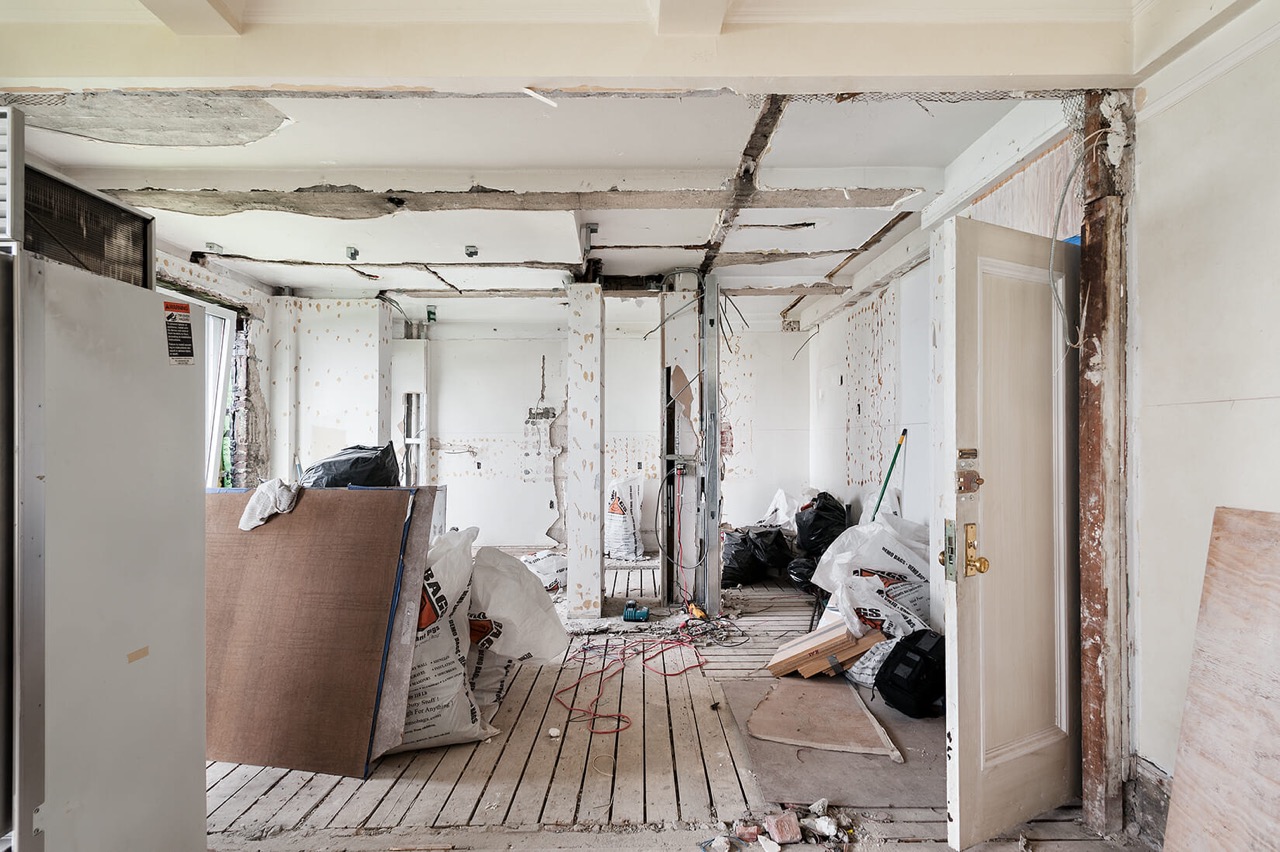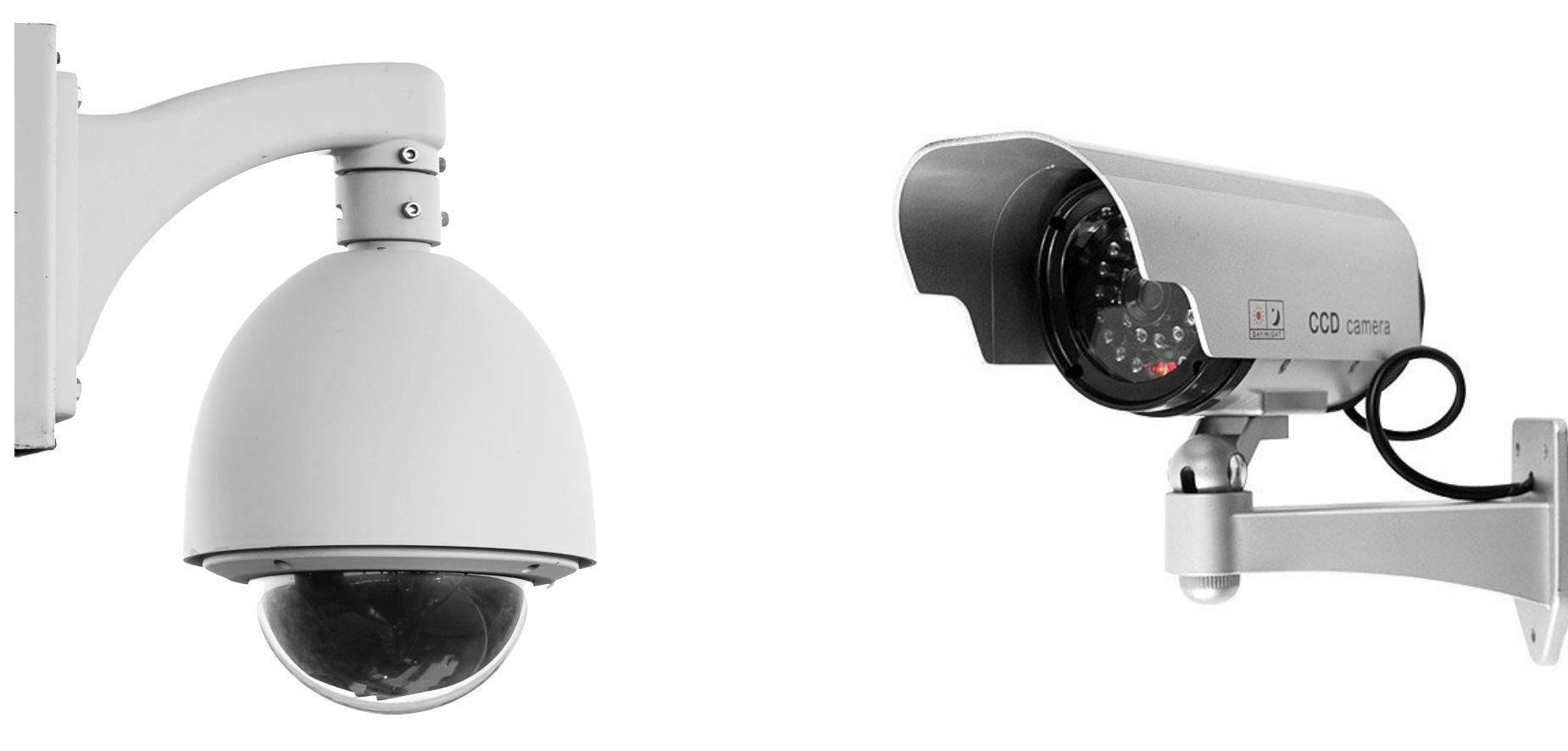

Articles
What Is A Duplex Home?
Modified: January 19, 2024
Discover everything you need to know about duplex homes in our comprehensive articles. Explore the benefits, features, and how to buy or rent a duplex property.
(Many of the links in this article redirect to a specific reviewed product. Your purchase of these products through affiliate links helps to generate commission for Storables.com, at no extra cost. Learn more)
Introduction
In the world of real estate, there are many different types of homes, each offering its own unique advantages and characteristics. One such type is a duplex home, which has been gaining popularity among homeowners and investors in recent years.
A duplex home, also known as a semi-detached house, is a residential building that is divided into two separate living units or residences. Each unit typically has its own entrance, living spaces, bedrooms, and bathrooms. This arrangement allows two separate households to live side by side under one roof, while still maintaining a sense of privacy and independence.
While duplex homes are not a new concept, their popularity has been steadily increasing due to the many benefits they offer. In this article, we will explore the definition and features of a duplex home, as well as the advantages and disadvantages of living in one. We will also delve into the different types of duplex homes, design considerations, and the growing popularity of this housing option.
Whether you are considering purchasing a duplex home or simply want to learn more about this unique housing arrangement, this article will provide you with a comprehensive overview of duplex homes and their benefits. So, let’s dive in and explore the world of duplex living!
Key Takeaways:
- Duplex homes offer a unique living arrangement with the potential for rental income, flexible living spaces, and a sense of community, making them an appealing choice for homeowners and investors seeking practical and adaptable housing options.
- The growing popularity of duplex homes is driven by their affordability, rental income potential, flexibility, space optimization, community connections, sustainability, and lower maintenance requirements, making them a sought-after choice for practical and adaptable living.
Read more: What Is Printer Duplexing
Definition of a Duplex Home
A duplex home is a type of residential building that consists of two separate units or residences, each designed to function as an independent living space. These units are typically attached side by side and share a common wall, but they have separate entrances and living areas. Duplex homes are commonly referred to as “semi-detached houses” or “twin homes.”
Each unit in a duplex home usually has its own set of amenities, such as bedrooms, bathrooms, kitchens, and living rooms. The layout and size of each unit may vary, but they are typically designed to be symmetrical to maintain a balanced appearance. Depending on the design, the units may be identical in size and layout, or they may have slight variations.
One of the defining features of a duplex home is the shared wall between the two units. This wall serves as a barrier, providing a degree of sound insulation and privacy between the two residences. Each unit has its own separate entrance, allowing residents to come and go without interfering with each other’s comings and goings.
Duplex homes are often designed with separate utilities, such as electrical and plumbing systems, for each unit. This allows for independent control of utilities, ensuring that residents are responsible for their own energy consumption and utility bills. Additionally, some duplex homes may have separate parking spaces or garages for each unit.
The division of a duplex home into two separate units offers a range of benefits, including the potential for rental income and flexible living arrangements. Homeowners have the option to live in one unit and rent out the other, providing an additional source of income. Alternatively, duplex homes can be ideal for extended families or multi-generational households, allowing different generations to live in close proximity while maintaining their privacy.
In summary, a duplex home is a residential building that consists of two separate living units, typically attached side by side, with separate entrances and amenities. These homes provide a unique living arrangement that offers practicality, flexibility, and potential rental income.
Features of a Duplex Home
Duplex homes are characterized by their distinct features and design elements, which set them apart from other types of residential buildings. Let’s explore some of the key features that make duplex homes unique:
1. Dual Living Units:
The primary feature of a duplex home is the presence of two separate living units within a single building. Each unit typically has its own entrance, living spaces, bedrooms, and bathrooms, providing residents with a sense of privacy and independence.
2. Common Wall:
A common wall is shared between the two units of a duplex home. This shared wall provides a level of sound insulation and privacy, ensuring that noise from one unit does not easily transfer to the other. It also helps to maintain the structural integrity of the building.
Read more: What Is A Duplexer On A Printer
3. Separate Entrances:
Duplex homes have separate entrances for each unit, allowing residents to come and go without
disturbing each other. This further enhances privacy and provides a sense of
individuality for each household.
4. Independent Amenities:
Each unit in a duplex home typically has its own set of amenities, including kitchens, living rooms, bathrooms, and bedrooms. This allows residents to have their own space and provides convenience and flexibility in terms of personal preferences and lifestyle choices.
5. Symmetrical Design:
Many duplex homes are designed to have a symmetrical layout, ensuring a balanced appearance both from the outside and inside. This symmetry adds to the aesthetic appeal of the building.
6. Separate Utilities:
Duplex homes are often equipped with separate utility meters for each unit, allowing for independent control of utilities such as electricity, water, and gas. This ensures that residents are responsible for their own utility consumption and allows for individual billing.
Read more: How To Design A Duplex House
7. Parking Spaces:
In some cases, duplex homes may have dedicated parking spaces or garages for each unit. This provides convenience and avoids parking conflicts between residents.
8. Outdoor Spaces:
Duplex homes may feature outdoor areas such as shared yards, patios, or balconies. These spaces can be utilized for relaxation, gardening, or socializing, depending on the preferences of the residents.
Overall, the unique features of a duplex home offer a combination of privacy, independence, and convenience for residents. The separate living units and individual amenities make them an attractive option for various living arrangements.
Advantages of Living in a Duplex Home
Living in a duplex home offers a range of advantages that make it an appealing option for homeowners. Here are some of the key benefits of living in a duplex home:
1. Rental Income:
One of the biggest advantages of living in a duplex home is the potential for rental income. Homeowners can choose to live in one unit and rent out the other, providing a source of passive income to help offset mortgage costs or other expenses. This can be particularly beneficial for first-time homebuyers or those looking to build wealth through real estate investments.
2. Multi-Generational Living:
Duplex homes are ideal for multi-generational households or extended families. With separate living units, different generations can live together while maintaining their privacy and independence. This arrangement allows for close proximity and support, fostering stronger family bonds and minimizing the need for long-distance travel or separate living arrangements.
3. Cost Savings:
Living in a duplex home can offer significant cost savings compared to living in a single-family home. Shared utilities, such as water, electricity, and heating, can be split between the two units, reducing monthly expenses. Additionally, the cost of purchasing a duplex home may be more affordable than buying two separate properties.
4. Flexibility and Adaptability:
Duplex homes provide flexibility and adaptability in terms of living arrangements. The second unit can be used for various purposes, such as a home office, guest suite, or rental unit. This allows homeowners to adjust their living situation as their needs change over time.
5. Sense of Community:
Duplex homes offer the advantage of shared living spaces and close proximity to neighbors. This can foster a sense of community, where residents can interact and support one another. Shared outdoor areas, such as yards or patios, can provide opportunities for socializing and building connections.
Read more: What’s Your Favorite Book Home Decor
6. Location:
Duplex homes are often located in established neighborhoods or desirable locations, offering convenient access to amenities, schools, and transportation. This can enhance the overall quality of life and provide convenience in daily activities.
7. Lower Maintenance:
Compared to larger properties, duplex homes generally require less maintenance and upkeep. With a smaller footprint, there is less exterior space to maintain, and shared expenses for common maintenance tasks, such as roof repairs or landscaping, can be divided between the two units.
Living in a duplex home presents numerous advantages, including rental income potential, cost savings, flexibility in living arrangements, and a sense of community. With its unique features and benefits, a duplex home can be an attractive option for a wide range of homeowners.
Disadvantages of Living in a Duplex Home
While living in a duplex home offers numerous advantages, it is important to consider the potential disadvantages as well. Here are some of the key drawbacks of living in a duplex home:
1. Noise and Privacy:
Despite the shared wall, noise can still be an issue in a duplex home. Sound can easily travel from one unit to the other, especially if proper sound insulation measures have not been taken. This can impact privacy and cause disturbances between neighbors.
Read more: What Is Insulation
2. Limited Outdoor Space:
Duplex homes often have limited outdoor space compared to single-family homes. While some duplexes may have shared yards or patios, the space may be smaller than what homeowners would have in a detached property. This can limit options for outdoor activities or gardening.
3. Shared Responsibilities:
In a duplex home, there are shared responsibilities between neighbors, especially for maintenance tasks that affect both units. Disagreements or differences in opinions regarding the management of shared areas or how expenses are divided can potentially strain relationships with neighbors.
4. Dependency on Neighbors:
Living in a duplex home means being in close proximity to neighbors. This can result in a level of dependency on them, as their actions or decisions may impact the overall living experience. Compatibility and communication with neighbors are important for a harmonious living environment.
5. Limited Control over Surroundings:
Living in a duplex home may limit your control over the surroundings. For example, you may not have complete control over the landscaping or exterior appearance of the building, as certain decisions may need to be made in coordination with your neighbor.
Read more: What Is Loft Insulation
6. Resale Value:
Duplex homes may have a relatively smaller market due to their specific design and layout. Depending on the location and demand, the resale value of a duplex home may not appreciate as much as that of a single-family home in the same area.
7. Parking and Shared Resources:
Shared parking spaces or limited parking availability can be a challenge in some duplex homes. Additionally, shared resources such as the garage or laundry facilities may require coordination and cooperation with neighbors, which can sometimes be inconvenient.
While these disadvantages should be considered, it is also important to note that they may vary depending on the specific circumstances and the relationship with neighbors. Clear communication and a good understanding of shared responsibilities can help mitigate these potential drawbacks.
Types of Duplex Homes
Duplex homes come in various styles and designs, catering to different needs and preferences. Here are some common types of duplex homes:
1. Side-by-Side Duplex:
A side-by-side duplex is the most traditional and common type of duplex home. As the name suggests, it consists of two separate units that are attached side by side. Each unit has its own entrance and usually shares a common wall. This type of duplex offers a symmetrical appearance, with mirrored layouts for each unit.
Read more: What Are Alarm Systems
2. Stacked Duplex:
A stacked duplex, also known as an up-and-down duplex, is a configuration where one unit is located on the ground floor, while the other unit is situated on the upper floor. These units are vertically stacked, with separate entrances for each unit. Stacked duplexes are popular in urban areas where land availability is limited.
3. Two-Storey Duplex:
A two-storey duplex is a type of duplex home where one unit is located on the ground floor, and the other unit is situated on the upper floor. This type of duplex provides a more spacious layout, with each unit typically spanning two floors. It offers separation of living spaces between the ground floor and the upper floor.
4. Back-to-Back Duplex:
A back-to-back duplex, also known as a tandem duplex, is a configuration where two separate units are attached back-to-back, sharing a common wall. Each unit has its own entrance, and the front and rear of the building typically have distinct facades. This type of duplex is common in areas where space is constrained.
5. Basement Duplex:
A basement duplex is a type of duplex home where one unit is located on the ground level, while the other unit is situated in the basement. The basement unit may have windows that provide natural light and separate access to the outside. This design allows for the utilization of below-ground space and can offer added privacy for both units.
Read more: What Are Insulation Baffles
6. Custom Designed Duplex:
Some duplex homes are custom-designed to cater to specific needs or architectural preferences. These custom duplex designs can vary widely in layout, style, and features. They offer the flexibility to create a unique living space that meets the requirements and desires of the homeowner.
These types of duplex homes provide a range of options to choose from, allowing homeowners to select a design that best suits their lifestyle and preferences. Whether it’s a side-by-side, stacked, two-storey, back-to-back, basement, or custom-designed duplex, each type has its own unique characteristics and advantages.
Building and Design Considerations for Duplex Homes
When building or designing a duplex home, there are several important factors to consider. These considerations can help ensure that the duplex is functional, visually appealing, and meets the needs of future residents. Here are some key building and design considerations for duplex homes:
1. Zoning Regulations and Building Codes:
Before beginning construction, it is crucial to research and understand the zoning regulations and building codes specific to duplex homes in your area. This includes setbacks, height restrictions, and any other requirements that may affect the design and construction of the duplex.
2. Unit Layout and Floor Plan:
The layout and floor plan of each unit in a duplex home should be carefully considered to optimize space and functionality. Each unit should have a balanced distribution of rooms and amenities, ensuring that the living spaces are comfortable and accommodating for residents.
Read more: What Is EPS Insulation
3. Soundproofing:
Due to the shared wall between the units, soundproofing is an important consideration in a duplex home. High-quality insulation materials and construction techniques can help minimize noise transfer between units, ensuring privacy and a peaceful living environment.
4. Separate Utilities and Infrastructure:
To provide independence and convenience for each unit, it is important to consider separate utilities and infrastructure. This includes separate heating and cooling systems, electrical meters, and plumbing connections for each unit. This allows residents to have control over their own utility usage and expenses.
5. Entryways and Pathways:
The design of entryways and pathways should be carefully planned to ensure easy access and a clear distinction between the units. Separate entrances and pathways help maintain privacy for each household and prevent confusion or interference between residents.
6. Exterior Aesthetics:
Exterior aesthetics play an important role in the overall appeal of a duplex home. The design should be cohesive, with attention to details such as facade materials, roof design, window placement, and landscaping. This helps create an attractive and visually appealing appearance for the duplex.
Read more: What Is Bibs Insulation
7. Parking and Storage:
Consideration should be given to parking spaces and storage options for each unit. Adequate parking spaces or garages, preferably with separate entrances, should be provided to accommodate the needs of residents. Additionally, sufficient storage areas, such as closets or storage rooms, are essential for each unit.
8. Energy Efficiency and Sustainability:
Building a duplex with energy-efficient features can help reduce environmental impact and lower utility costs for residents. This can include energy-efficient appliances, insulation, lighting, and renewable energy sources. Incorporating sustainable features not only benefits the environment but also adds value to the duplex home.
By considering these building and design considerations, you can create a well-designed, functional, and appealing duplex home that meets the needs and desires of future residents. A carefully planned duplex will provide comfort, privacy, and an enjoyable living experience for those who call it home.
The Growing Popularity of Duplex Homes
In recent years, duplex homes have witnessed a surge in popularity among homeowners and real estate investors. There are several factors that have contributed to the increasing demand and growing popularity of duplex homes:
1. Affordability:
Duplex homes often offer a more affordable option compared to single-family homes. For first-time homebuyers or those looking to enter the real estate market, purchasing a duplex allows them to own a property while generating rental income from the other unit. This financial advantage has made duplex homes an attractive choice for individuals seeking affordable homeownership.
2. Rental Income Potential:
The potential for rental income is a significant contributor to the popularity of duplex homes. Homeowners have the option to live in one unit and rent out the other, which helps offset mortgage costs and create a passive income stream. This income-generating potential makes duplex homes appealing to investors looking to diversify their portfolio and maximize return on investment.
3. Flexible Living Arrangements:
Duplex homes provide flexibility in terms of living arrangements. They can accommodate a variety of living situations, such as multi-generational families, co-living setups, or those seeking separate spaces for work and living. The ability to customize the living environment according to specific needs and preferences is a key feature attracting homeowners to duplex homes.
4. Urbanization and Land Constraints:
As urban areas continue to grow, land availability becomes a constraint for housing development. Duplex homes offer an efficient and space-saving solution by maximizing land usage. They can be built on smaller lots or in established neighborhoods where detached properties are not feasible due to space limitations. The compact footprint of duplex homes assists in meeting the housing demand in densely populated areas.
5. Sense of Community:
Duplex homes often foster a greater sense of community compared to larger developments. The close proximity of neighbors encourages interaction and the formation of relationships. Shared outdoor spaces or common areas can facilitate socializing and create a tight-knit community feel. This sense of belonging and community is appealing to individuals who value connections with their neighbors.
Read more: What Is A Home Improvement
6. Sustainability and Energy Efficiency:
With increased environmental consciousness, there is a growing interest in sustainable and energy-efficient homes. Duplex homes can easily incorporate eco-friendly features such as solar panels, energy-efficient appliances, and insulation. This alignment with sustainability initiatives has further boosted the popularity of duplex homes among environmentally conscious homeowners.
7. Lower Maintenance:
Compared to larger properties, duplex homes typically require less maintenance and upkeep. The smaller size and shared responsibilities for common areas reduce the workload and costs associated with maintenance. This lower maintenance burden appeals to homeowners looking for a convenient and manageable living situation.
The combination of affordability, rental income potential, flexible living arrangements, space optimization, community connections, sustainability, and lower maintenance has driven the increasing popularity of duplex homes. As the demand for practical and adaptable housing options continues to rise, duplex homes are expected to remain a sought-after choice for homeowners and investors alike.
Conclusion
Duplex homes have become a popular choice for homeowners seeking affordability, flexibility, and income-generating opportunities. These unique residential buildings offer two separate living units under one roof, with each unit designed for independence and privacy. The advantages of living in a duplex home include the potential for rental income, multi-generational living arrangements, cost savings, and a sense of community.
While there are some disadvantages to consider, such as noise transmission and shared responsibilities, the benefits of duplex living often outweigh these drawbacks. The different types of duplex homes, including side-by-side, stacked, two-storey, back-to-back, basement, and custom-designed, offer a variety of design options to suit different preferences and needs.
Building and design considerations play a crucial role in creating functional and visually appealing duplex homes. Attention should be given to zoning regulations, unit layout, soundproofing, separate utilities, entryways, exterior aesthetics, parking, storage, and energy efficiency.
The growing popularity of duplex homes can be attributed to their affordability, rental income potential, flexible living arrangements, urbanization constraints, sense of community, sustainability, and lower maintenance requirements. As homeowners and investors continue to seek practical and adaptable housing options, the demand for duplex homes is expected to remain strong.
In conclusion, duplex homes offer a unique and advantageous living arrangement, providing the best of both worlds in terms of privacy and potential income. With their diverse designs and benefits, duplex homes have become an appealing option for those looking for affordable homeownership, flexible living arrangements, and community connections. Whether utilized as a primary residence, investment property, or multi-generational housing, the popularity of duplex homes is likely to thrive in the years to come.
Frequently Asked Questions about What Is A Duplex Home?
Was this page helpful?
At Storables.com, we guarantee accurate and reliable information. Our content, validated by Expert Board Contributors, is crafted following stringent Editorial Policies. We're committed to providing you with well-researched, expert-backed insights for all your informational needs.




0 thoughts on “What Is A Duplex Home?”